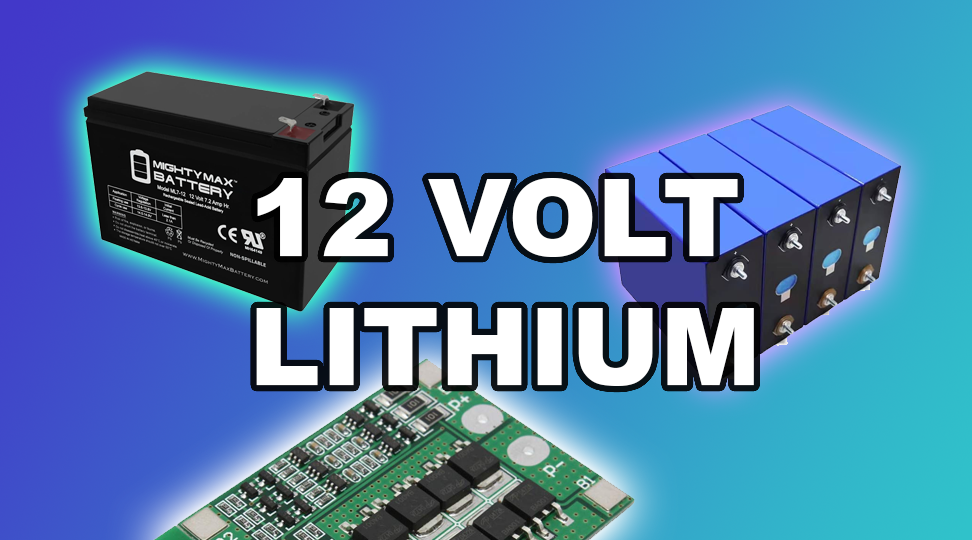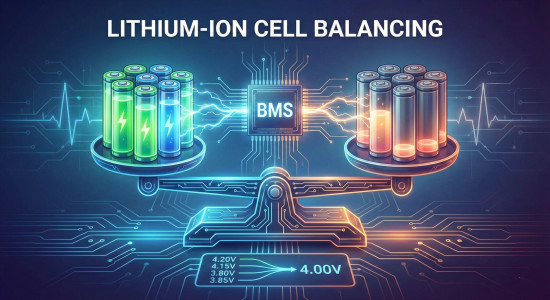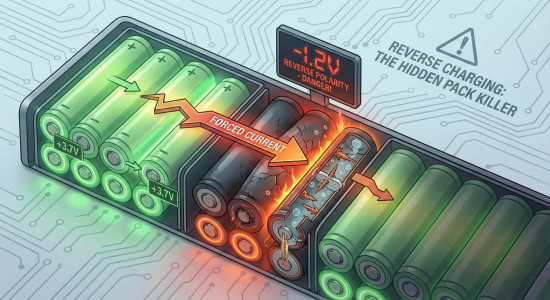
The Ultimate Guide to 12V Lithium-Ion Batteries: Build, Charge, and Use
Table of Contents
- What Is A 12V Battery?
- What Is The Best Chemistry For A 12V Lithium Ion Battery?
- What Is The Voltage Range Of a 12V Lead Acid Battery?
- What Can You Run With A 12V Lithium Ion Battery?
- Battery Management Systems (BMS) and Cell Balancing
- Charging Strategies and Best Practices
- Safety Considerations and Thermal Management
- Maintenance, Lifespan, and Recycling
- When Not To Use A 12V Lithium‑Ion Battery
12 volts is arguably the most common system voltages for low cost electronics, small household appliances, and PC peripherals that aren't bus-powered. That means if you can build a 12v lithium ion battery, you can build a battery that can power literally millions of devices. But is it possible to build a 12v lithium ion battery? And really, when is a 12 volt battery, anyway?.
In this article, we will cover the ins and outs (literally, we are going to talk about charge and discharge) 12v lithium ion batteries. We will cover how to build them, how to charge them, how to use them, and when not to use them. We’re also going to explain how not all 12v lithium ion batteries are created equally.
What Is A 12V Battery?
A 12V battery is a battery that has a nominal voltage close to 12 volts. When using NMC chemistry, the closest you can get is a 3S configuration that yields a nominal voltage of 11.1 volts. These kinds of batteries have a 12.6V maximum charging voltage, so that means they will power most 12V devices for most of its state of charge. I say most because NMC lithium ion cells have a dead voltage of around 2.8 volts.
When cells are added in series, their voltages add. That means a 3S NMC lithium 12V battery will have a full charge voltage of 12.6V and a dead voltage of around 8.4V. This makes this type of 12V lithium ion battery unsuitable to power 12V devices during the bottom half of its discharge curve.
What Is The Best Chemistry For A 12V Lithium Ion Battery?
LFP (Lithium Iron Phosphate) chemistry is the best chemistry for a 12V lithium ion battery. This is because of the slightly lower operational voltage range of LFP chemistry compared to NMC. While NMC has a dead voltage of around 2.8V and a full charge voltage of 4.2V, LFP has a dead voltage of about the same 2.8V mark, but a full charge voltage of just 3.65V That means instead of 3 cell groups in series, you can put 4 LFP cell groups in series to achieve a voltage range almost identical to a 12V lead acid battery.
But wait, why do I want the voltage range of an older 12V battery? Wouldn’t it be better to leave the old standard behind and move forward? Well, probably. But the problem is, lead acid batteries were popular for a really long time. Because of this, millions and millions of devices were made to operate in that voltage range.
What Is The Voltage Range Of a 12V Lead Acid Battery?
A 12V lead acid battery has a voltage range of either 10.5V to 13.8V or 10.5V to 14.5V. While it's true that a 12V lead acid battery has a voltage range of around 10.5 volts to 14.5 volts, if a lead acid battery is going to be left on a charger for a long period of time, it’s best to lower the charge voltage to around 13.8V instead of 14.5V. Because of this fact, there are essentially two voltage ranges for a 12V lead acid battery.
What Can You Run With A 12V Lithium Ion Battery?
There are literally millions of devices that you can run with a 12v lithium ion battery. Inverters, Radios, Lights, Fans, and many more devices and small appliances will happily run on a 12V lithium ion battery. But it's important to note that not all 12V lithium ion batteries are made equally.
In the case of a 12V lithium ion battery the chemistry chosen is very important. If it's an LFP 12V lithium ion battery and it already runs on a 12V lead acid battery, you can basically just swap out the lead acid 12V battery with the lithium one and you are good to go. If, however, you are replacing a 12V lead acid battery with a 12V NMC lithium ion battery, you are going to have to use a regulator or custom charger.
Battery Management Systems (BMS) and Cell Balancing
A robust BMS is the heart of a reliable 12 V lithium‑ion pack. It must monitor each cell’s voltage to prevent any cell from rising above its maximum or falling below its cutoff, and perform cell balancing to ensure uniform capacity across the pack. Passive balancing—bleeding off excess charge through resistors—is inexpensive but slow, whereas active balancing transfers charge between cells more efficiently and with less heat. The BMS should also include current sensing to cut off charging or discharging in over‑current scenarios, and ideally thermal monitoring (via built‑in temperature sensors) to shut the pack down if it overheats. Without a proper BMS, your pack is prone to cell imbalance, diminished capacity, and in the worst case, thermal runaway.
Charging Strategies and Best Practices
Proper charging extends battery lifespan and maintains safety. Use a CC/CV (constant‑current, constant‑voltage) charging profile: first apply a steady current until cells reach their maximum voltage, then hold that voltage and allow the current to taper off. Observe the correct cutoff voltages—4.2 V per cell (12.6 V total) for 3S NMC packs, and 3.65 V per cell (14.6 V total) for 4S LFP packs—and choose a charge rate between C/2 and 1C. Slower rates (C/5 or C/10) are gentler and promote longer life. Avoid float charging for lithium‑ion; instead cycle your pack between roughly 20 % and 80 % state of charge for daily use. Always charge within a safe temperature window (0 °C to 45 °C) to prevent lithium plating or electrolyte breakdown. Finally, use chargers specified for your exact chemistry and series count—a “12 V lithium charger” typically implies a 3‑cell NMC charger, so if you’re using a 4S LFP pack you’ll need an LFP‑compatible charger.
Safety Considerations and Thermal Management
Lithium‑ion packs can be very safe when properly managed. Ensure good ventilation and heat dissipation by using cases with airflow or integrating heat sinks for high‑current builds. Install a suitably rated fuse or circuit breaker on the pack’s main positive lead—sized just above your maximum expected load—to protect against short circuits and over‑current. Build your enclosure from fire‑retardant materials (UL 94‑rated plastics or metal with insulating barriers) and avoid cramming cells so tightly that they cannot dissipate heat. For high‑drain applications, consider phase‑change materials or thermal pads to further spread heat. Conduct regular inspections for signs of cell bulging, corrosion, or loose connections, and replace any suspect cells immediately. Never leave a charging pack unattended, and always place it on a non‑combustible surface.
Maintenance, Lifespan, and Recycling
To maximize cycle life and minimize environmental impact, practice good maintenance and recycling habits. Operate your pack within a moderate state‑of‑charge window (20 %–80 %) whenever possible—full 0 %–100 % cycles stress cells more and accelerate capacity fade. Expect an initial capacity loss of about 5 %–10 % over the first 100 cycles, then roughly 2 %–3 % per year thereafter. For long‑term storage, set your pack to about 40 %–50 % state of charge and keep it at a cool, stable temperature (15 °C–25 °C). When a cell’s capacity irreversibly drops below about 70 %–80 %, retire it to a certified lithium‑ion recycling facility—never dispose of cells in general waste. By adhering to proper charging, storage, and thermal management, you can achieve hundreds to thousands of useful cycles.
When Not To Use A 12V Lithium‑Ion Battery
Despite their many advantages, there are circumstances where a 12 V lithium‑ion pack may not be the optimal choice. For very low‑drain devices—such as small timers or sensors—a lead‑acid battery can be more cost‑effective and tolerate low trickle currents better. In freezing environments, charging below 0 °C is unsafe for lithium‑ion, so consider alternative chemistries if you need to charge in subzero conditions. If upfront budget is the primary concern, lead‑acid still offers lower cost per watt‑hour. For applications requiring a float voltage above 14 V, an LFP pack may never fully charge without a custom charging solution. Finally, during rapid prototyping with frequently changing load requirements, the simplicity and forgiving nature of lead‑acid may outweigh the weight and cycle‑life benefits of lithium‑ion.


